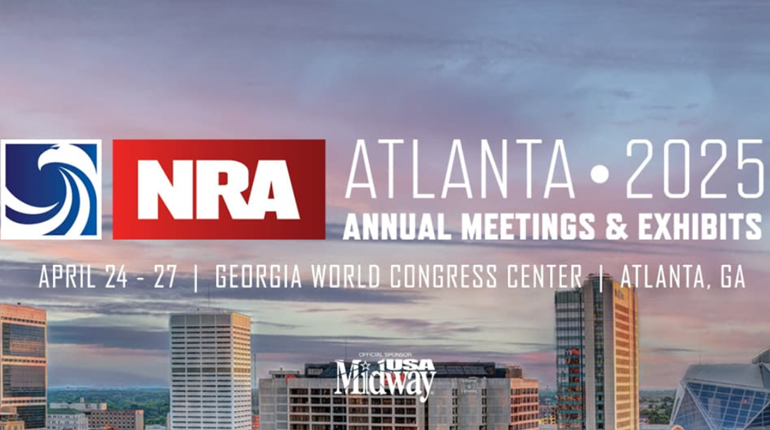
We’re a trifle melancholy as we wrap up our “Open” Glock build. That’s mainly because we enjoy the process, but also because we learn so darn much. Between Billy Lester at Jager Products and LtCol. Freddie Blish at Robar, we’re miles ahead of where we started out. (Congrats, by the way, are due Sgt. Lester: USPSA High LEO in Open at Optics Nationals. Any wonder he’s our go-to guy?)
Then of course, there’s the fine converted pistol we have to show for it. If that won’t “unmelancholy” a fella (or lady) in a hurry, what would?
That said, a crucial major part and a smaller hidden one remain for our nearly complete Open upgrade. “Major” we mean in the sense of “important”—our red-dot optic—and “smaller” will be self-explanatory a few paragraphs hence.
Big Dot/Little Dot
We started our build with the proposition that a minor dust-up can be provoked by contending that either the compensator or the red dot is more important for a successful Open gun. Now nearly six jots down the road, we’re more convinced than ever that it’s right at 50/50.
There’s no question that a properly activated comp keeps the muzzle incredibly flat, but that’s not very helpful if the aiming cue must be rediscovered after every trigger press. Remember, our comp’d system can’t nullify Newton (Sir Isaac, that is). The energy is redirected usefully to be sure, but sights still move. While some shooters prefer their conventional sights (and they’re entitled to such tastes), both competitive and real-world results indicate the jury is in: Loved or not, the modern red-dot has no rivals in speed, and especially in conjunction with a compensated barrel system.
This observation has a catch to it, however: It does not mean all red dots are the same. Having two from top-rank manufacturers handy, we did what any self-respecting gunny would do—burned more ammo.
Our first go was an 8-MOA JPoint. Just three things to say, really. We’ve thumped this around on several firearms, both long and short, without a hitch. We hit routinely with appropriate cartridges out to 100 yards (and we think our eyes are the limiting factor here, not the optic). And we prefer the “matte” finish appearance of the dot on its acrylic lens. To our eyes, it seems to take less insult from sub-par ambient light conditions both indoors and out. This is especially apparent with bright side-lighting early or late in the day.
Something of a sidebar here, especially if your peepers are on the wrong side of 40. Or 50. Or … you get the idea. Big dots are occasionally faulted for imprecision, but we’ve found this to be balderdash to surprising distances. Remember that your distance prescription will make any dot clear and sharp too—not, repeat not, your readers.
Our refutation is in two parts, and the first is simple—especially when speed is a goal, a big dot is easier to find as pistol, head and body move. The second depends to some extent on what is meant by “precision.” Our short version is this: If your firearm is reasonably accurate, the sight properly set, and distance not extreme, shots will always fall inside the area of the dot. If this strikes a distant cord in terms of a field notion, namely “point-blank” distance, you have the concept exactly.

Where the big dot gives an edge—at least in our opinion—is in rapid centering of the larger aiming cue over the target. Because the brain is comparing smaller distances from the edge of the dot to the edge of the target, the comparison occurs more quickly. We’ve some suspicion that this advantage even compounds slightly in situations where the outsized nature of the dot provides a “stand-off” on a target that is partially obscured by a no-shoot, for instance. Whether it works with your nuero-optics may be another matter. For the moment, we take the extra points and run!
In any event, we set the JPoint up first and would have been quite content with both our results and theory until the Meopta MEORED 30 showed up.
Where the JPoint is cut from decidedly excellent mount-and-forget cloth, the Meopta exudes what we’re starting to think of as a “Czech” imprimatur: considered precision down to miniscule nuances and take-no-prisoners quality. Conveniently, it was at useful contretemps with the polymer/acrylic/8 MOA JP, being aluminum/glass/3 MOA.
Suffice it to say we’d be pulling our hair out—if we had any—trying to decide which is really better. The Meopta is twice the weight of the JPoint, but that still means a paltry ounce, and not nearly enough to upset Lester’s/Jager’s comp and slide dynamics. It also sits slightly but noticeably lower on the slide, meaning the dot is more closely aligned with the barrel. If you think this doesn’t matter, just wait until you see an Open gunner with a non-slide mounted optic shoot through a narrow horizontal port: The world’s most efficient .355 or .356 wood-chipper it is, but hell on scores as it bounces bullets every which way.
We had to remind ourselves about the smaller lens and glass material: Meopta has something going on with their coatings that makes the glass far less “flarey” than others, and we think the low height reveals the (often hilarious) open-gunner-dot-hunt for what it is—the mind and eye want to look as low over the pistol as possible, and despite long practice you still see folks “lose” their dot on the high side. We’ve not had a whiff of that yet with the low-riding, clear-as-a-bell Meopta.
Our dot size vs. target size speed coefficient is still up in the air. We think we’re faster on the JP, but a true hotrod finger (.10 splits on a Glock) insists, politely but firmly, that we’re cracked.
Awwww, phooey; we’ll just have to shoot it more.
Icing On The Cake?

While the big hitters are settled to the point of having a very usable pistol, a somewhat obscure nuance remains. It comes in the form of a spring-swapping guide rod and 10-pound spring, and you won’t get either the functional reliability you’ll want or the flat recoil until you change over. What can often be a labored, trial-and-error process couldn’t be simpler than it is with the Jager guide rod. (It’s our new favorite for converting the stock, counter-wound two-spring system to one, tuned spring. This has lots of application outside of Open guns by the way, and we’ll talk about this sometime soon.)
The guide rod system is important in a second sense that won’t apply to everybody, and that has to do with ammunition. We split our testing between factory 115s and 124/5s, and handloads. The factory performed well, but the last 15 to 20 percent of optimized performance comes from tuning the bullet mass to the powder charge to the spring, and finally to you. If you don’t yet reload, you’ll never have a better reason to give it a try than your Open conversion.
We end our build with a caution. In one sense, the appeal of such a project doesn’t involve any actual “gunsmithing.” What we’ve walked through is parts replacement, and we went out of our way to choose those in which we had particular confidence and experience. But it’s a mistake to think that our trouble-free transit will always be possible.
In the end, it’s your firearm, your parts, your choices and your responsibility. Don’t be afraid to take the whole business to a gunsmith. The cost will be a pittance, the caution a relief, and the safety a joy.
Part 1 Part 2 Part 3 Part 4 Part 5
Frank Winn has been studying arms and their relationship to tyranny, meaningful liberty and personal security all his adult life. He has been a firearms safety/shooting instructor for more than 20 years, and earned state, regional and national titles in several competitive disciplines.


































